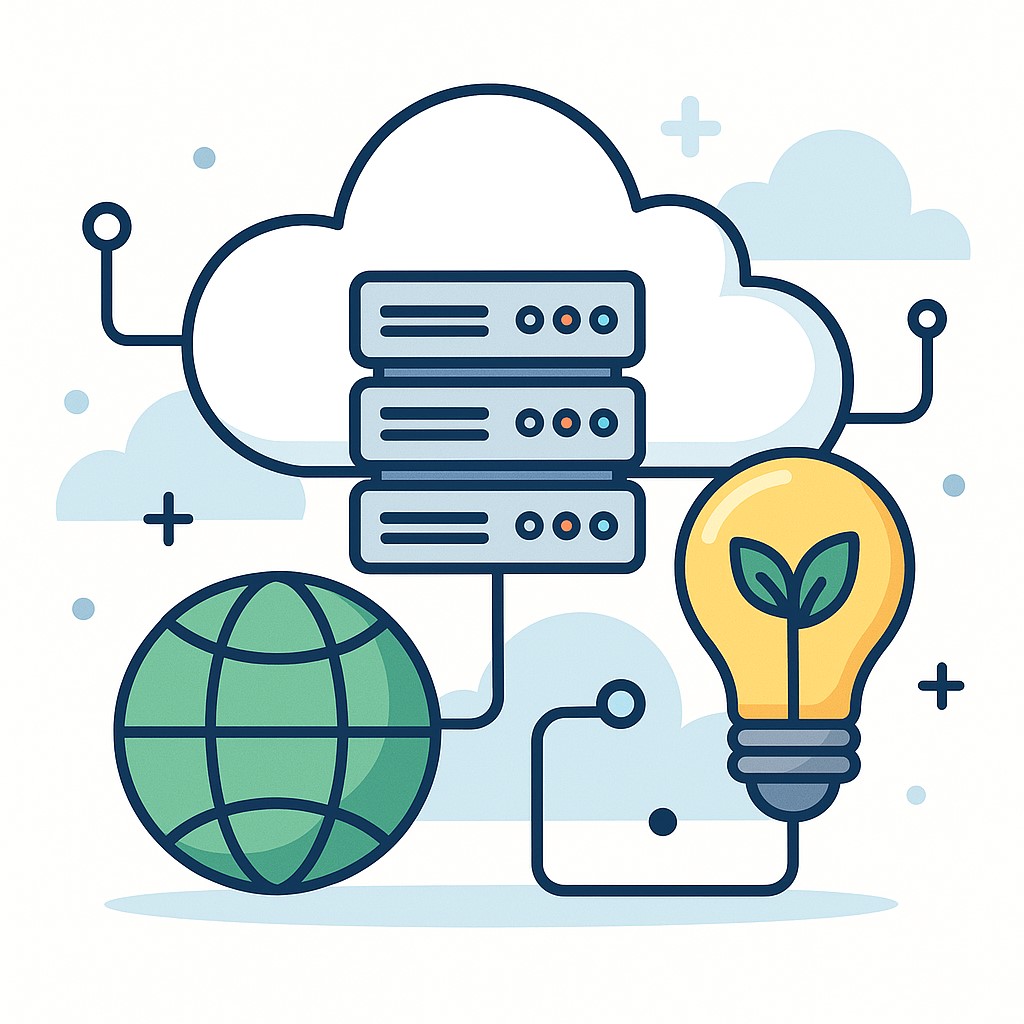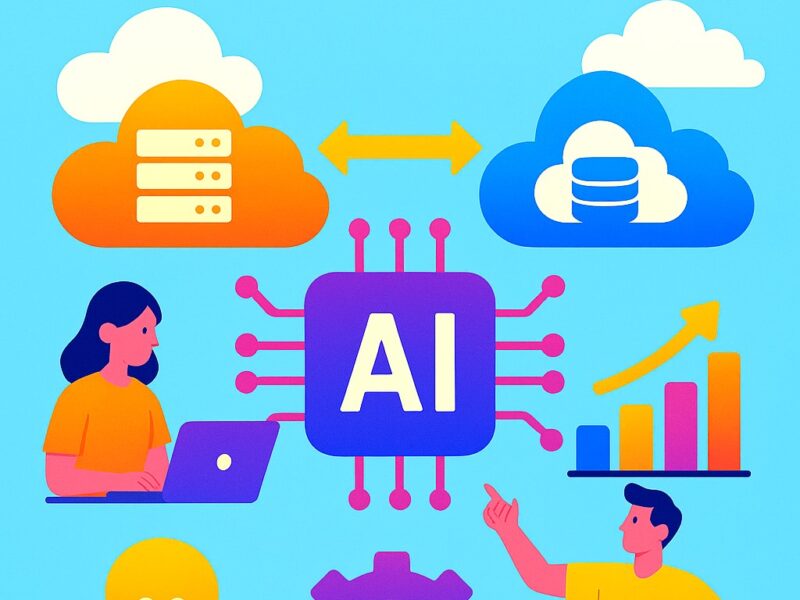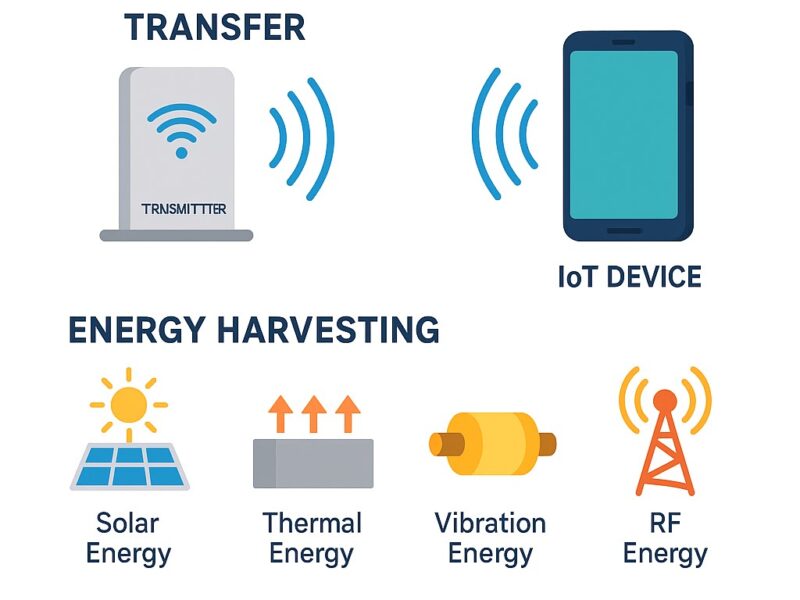Energy Efficient Utilization Of Resources In Cloud Computing Systems

Cloud computing has revolutionized the way businesses operate, offering scalable resources, reduced capital expenses, and greater flexibility. However, as demand for cloud services grows, so does the energy consumption of data centers worldwide. This makes energy efficiency not just an environmental necessity but also a cost-saving priority for cloud providers and users alike.
In this article, we’ll explore how energy-efficient utilization of resources in cloud computing systems can be achieved, along with practical methods, technologies, and industry practices that are shaping the future of sustainable cloud infrastructure.
Why Energy Efficiency Matters in Cloud Computing
Cloud data centers are known for their massive energy requirements. According to the International Energy Agency (IEA), data centers consumed roughly 1-1.5% of global electricity demand in recent years. This percentage is expected to rise if no major changes are made in infrastructure design and energy use strategies.
Energy inefficiency can lead to:
-
High operational costs
-
Increased carbon emissions
-
Poor resource utilization
-
Reduced scalability
To tackle these challenges, cloud computing providers are adopting more energy-efficient practices that balance performance and environmental responsibility.
Key Components of Energy Efficiency in the Cloud
Energy efficiency in cloud systems is not just about using less power—it’s about intelligently managing computing resources to reduce energy waste while maintaining high performance.
Here are the major areas where energy optimization can make a difference:
1. Virtualization and Server Consolidation
One of the primary ways to achieve energy efficiency is through virtualization. Virtual machines (VMs) allow multiple workloads to run on a single physical server, increasing hardware utilization and reducing idle power consumption.
Key benefits:
-
Fewer physical servers needed
-
Lower cooling and maintenance requirements
-
Dynamic resource allocation based on workload demand
Server consolidation using hypervisors (like VMware, KVM, or Hyper-V) also minimizes energy use by powering down unused servers during low-demand periods.
2. Dynamic Resource Allocation
Intelligent scheduling and resource allocation algorithms can significantly improve energy use. By monitoring real-time workloads, cloud systems can dynamically adjust CPU, memory, and storage resources to fit the needs of applications.
For instance, if an application is not using all of its allocated resources, the excess can be reallocated to another application or the server can be shifted into a low-power state.
Technologies involved:
-
Load balancing
-
Auto-scaling
-
Energy-aware scheduling algorithms
3. Energy-Aware Load Balancing
Traditional load balancers prioritize performance and availability. However, energy-aware load balancing also takes power consumption into account.
It redirects tasks to servers operating at higher energy efficiency or to those in regions with lower energy costs or renewable power availability. This minimizes both energy use and operating expenses.
4. Efficient Cooling Systems
Cooling systems consume a significant portion of a data center’s total energy. Using advanced cooling methods like free air cooling, liquid cooling, and AI-based thermal management helps reduce this load.
Modern strategies include:
-
Hot/cold aisle containment
-
Liquid immersion cooling
-
AI-powered HVAC optimization
Google and Microsoft have already begun using AI models to regulate data center temperatures, leading to noticeable reductions in energy usage.
Green Cloud Architecture: Designing for Sustainability
Cloud service providers are now building systems with green architecture in mind. This involves integrating energy-saving practices from the design phase to deployment and beyond.
Key Elements of Green Cloud Design:
-
Energy-efficient hardware: Using ARM-based processors or energy-saving chipsets.
-
Renewable energy integration: Data centers powered by solar, wind, or hydroelectric sources.
-
Modular data centers: Easier to scale and more energy-efficient than traditional centers.
Amazon Web Services (AWS), Microsoft Azure, and Google Cloud have all committed to carbon neutrality and have increased their reliance on renewable energy sources to power their infrastructure.
The Role of AI and Machine Learning in Energy Optimization
Artificial intelligence and machine learning (ML) are now being used to manage and optimize energy consumption in real-time. These systems analyze data patterns and predict workloads to dynamically scale resources.
For example, Google’s DeepMind AI reduced energy usage for cooling its data centers by 40%, showing how AI can make cloud systems far more sustainable.
Applications of AI in energy efficiency:
-
Predictive maintenance of hardware
-
Load forecasting and capacity planning
-
Automated resource provisioning
Energy-Efficient Software Development Practices
Efficient cloud computing isn’t just about hardware—it’s also about writing optimized code. Developers are encouraged to:
-
Minimize code bloat
-
Optimize queries and algorithms
-
Avoid excessive API calls and redundant processes
Even small changes in how applications are designed can reduce energy use when scaled across millions of users.
Metrics for Measuring Cloud Energy Efficiency
To ensure progress, energy efficiency must be measurable. Commonly used metrics include:
-
Power Usage Effectiveness (PUE): Ratio of total facility energy to IT equipment energy. Ideal PUE is 1.0.
-
Carbon Usage Effectiveness (CUE): Measures carbon emissions per unit of IT workload.
-
Server Utilization Rates: Tracks how effectively server capacity is being used.
By tracking these metrics, organizations can identify inefficiencies and improve their cloud sustainability strategy.
Challenges to Energy-Efficient Resource Utilization
Despite advancements, several challenges remain:
-
Legacy systems that lack energy-saving capabilities
-
High cost of transitioning to green infrastructure
-
Balancing performance with energy conservation
-
Lack of standardization across cloud vendors
However, growing regulatory pressure and consumer demand for sustainability are driving innovation and adoption.
Future Trends in Cloud Energy Efficiency
As we look forward, the trend is clear: the cloud must become greener. Here are a few trends to watch:
-
Carbon-aware computing: Shifting workloads to times or regions with lower carbon footprints.
-
Serverless computing: Eliminates the need to manage infrastructure, automatically optimizing resource use.
-
Edge computing: Reduces the need for long-distance data transfer, saving bandwidth and energy.
-
Quantum computing: Promises higher efficiency for certain types of computations, although it’s still in early stages.
Conclusion: Building a Sustainable Cloud Future
Energy efficient utilization of resources in cloud computing systems is no longer optional—it’s essential. From reducing carbon emissions to lowering operating costs, the benefits are clear. Businesses, developers, and cloud providers must work together to build cloud infrastructure that’s both powerful and sustainable.
Through smarter design, innovative technologies, and responsible usage, we can ensure that cloud computing continues to support the digital age without compromising the health of our planet.
Key Takeaways
-
Energy efficiency is critical in cloud computing to reduce operational costs, carbon emissions, and environmental impact.
-
Virtualization and server consolidation help maximize hardware utilization and minimize idle energy consumption.
-
Dynamic resource allocation and energy-aware scheduling ensure that resources are used only when needed, reducing power waste.
-
Advanced cooling systems and AI-driven thermal management significantly lower data center energy consumption.
-
Green cloud architecture integrates energy-efficient hardware, renewable energy sources, and modular data centers for sustainable performance.
-
AI and machine learning can optimize workloads and energy usage in real time, improving overall cloud system efficiency.
-
Developers play a role too—optimized software reduces energy needs when scaled across cloud environments.
-
Metrics like PUE and CUE are essential for tracking and improving energy efficiency in cloud operations.
-
Emerging trends like carbon-aware computing, edge computing, and serverless architecture are paving the way for a greener cloud future.
-
Collaboration between providers, developers, and users is vital for building sustainable and energy-efficient cloud systems.
References
https://en.wikipedia.org/wiki/Energy_efficiency
https://en.wikipedia.org/wiki/Cloud_computing
Links License – https://en.wikipedia.org/wiki/Wikipedia:Text_of_the_Creative_Commons_Attribution-ShareAlike_4.0_International_License
Welcome you to check out the tech products section of my blog. Thanks For Your Support.
https://techsavvo.com/category/tech-products/

